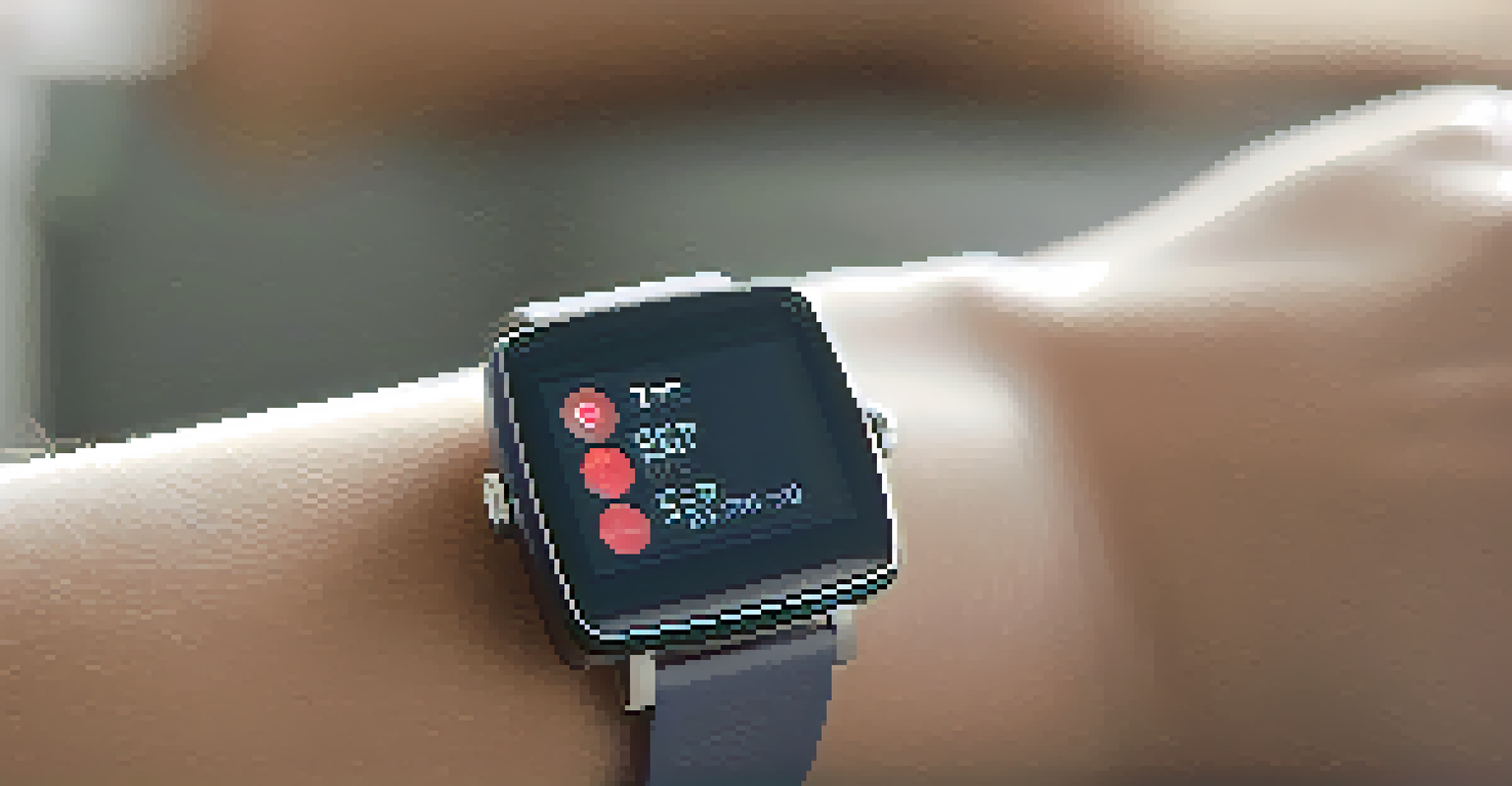Sleep Disorders and Technology: Tools to Aid Diagnosis

What Are Sleep Disorders and Their Impact on Life?
Sleep disorders encompass a range of conditions that disrupt normal sleep patterns, affecting millions globally. These disorders can lead to severe consequences, including chronic fatigue, mood changes, and impaired cognitive function. For example, someone suffering from insomnia may find it challenging to concentrate at work, leading to decreased productivity and increased stress.
Sleep is the golden chain that ties health and our bodies together.
The impact of sleep disorders extends beyond just the individual; relationships and overall quality of life can suffer as well. Imagine a parent struggling with sleep apnea who is irritable and fatigued during family activities. Not only does their well-being decline, but their loved ones also feel the ripple effects of their sleep issues.
Understanding these disorders is crucial, as early diagnosis can lead to effective treatment and improved quality of life. With the advent of technology, diagnosing sleep disorders has become more accessible and accurate, paving the way for better health outcomes.
Common Types of Sleep Disorders Explained
There are several types of sleep disorders, with insomnia, sleep apnea, and restless legs syndrome being among the most prevalent. Insomnia, characterized by difficulty falling or staying asleep, affects individuals of all ages and can be triggered by stress or lifestyle choices. Sleep apnea, on the other hand, involves interrupted breathing during sleep and can have serious health implications if left untreated.

Restless legs syndrome is another common condition that causes uncomfortable sensations in the legs, often resulting in an irresistible urge to move them, especially at night. Each of these disorders presents unique challenges and symptoms, making accurate diagnosis essential for effective treatment.
Impact of Sleep Disorders
Sleep disorders can severely affect an individual's productivity, relationships, and overall quality of life.
Understanding the nuances of each disorder can help individuals seek the right help. By leveraging technology, healthcare providers can pinpoint specific issues, allowing for tailored treatment plans that address individual needs.
The Role of Technology in Diagnosing Sleep Disorders
Technology has revolutionized the way sleep disorders are diagnosed, providing tools that enhance accuracy and ease. Traditional sleep studies, or polysomnography, required overnight stays in sleep clinics, which could be uncomfortable and inconvenient. Now, wearable devices and smartphone apps allow individuals to monitor their sleep patterns from the comfort of their homes.
A good laugh and a long sleep are the best cures in the doctor's book.
These technologies track vital statistics such as heart rate, breathing patterns, and even snoring, providing valuable data for healthcare providers. For instance, a smartwatch equipped with sleep tracking features can reveal patterns that may indicate sleep apnea, prompting further investigation by a medical professional.
Employing technology not only simplifies the diagnostic process but also empowers individuals to take an active role in their sleep health. This shift towards patient-centered care is essential for fostering better health outcomes.
Wearable Devices: Tracking Sleep Patterns Effortlessly
Wearable devices like fitness trackers and smartwatches have become popular tools for monitoring sleep. These gadgets typically use sensors to collect data on sleep duration, quality, and cycles, giving users insights into their nightly rest. For example, a user might discover they spend more time in deep sleep than REM sleep, which can inform their lifestyle adjustments.
The convenience of wearables lies in their ability to provide real-time feedback, allowing users to make immediate changes to improve their sleep hygiene. If someone notices they sleep poorly after late-night screen time, they may choose to implement a digital curfew, leading to better sleep quality.
Technology Enhances Diagnosis
Innovative tools like wearable devices and mobile apps are revolutionizing the diagnosis and management of sleep disorders.
Moreover, this data can be shared with healthcare providers, enhancing the diagnostic process. By having access to detailed sleep metrics, doctors can make informed decisions about treatment, ensuring a more personalized approach to care.
Mobile Apps: Personal Sleep Assistants at Your Fingertips
Mobile applications dedicated to sleep tracking and improvement have gained traction in recent years. These apps often incorporate features like sleep diaries, relaxation techniques, and guided meditations to enhance sleep quality. Users can log their sleep habits, identify patterns, and receive personalized tips for better rest.
For instance, an app might suggest establishing a bedtime routine or practicing mindfulness techniques to help users unwind. Such recommendations can lead to significant improvements in sleep quality over time, as they address the root causes of insomnia or anxiety.
In addition, many apps offer integrations with wearable devices, creating a comprehensive picture of an individual's sleep health. This data-driven approach allows users to take charge of their sleep, making it easier to address issues before they escalate.
Telehealth: Connecting Patients with Sleep Specialists
Telehealth has emerged as a vital resource for patients seeking help with sleep disorders. With the convenience of virtual appointments, individuals can consult sleep specialists without the need for extensive travel or waiting times. This accessibility is particularly beneficial for those living in remote areas, where sleep experts may be scarce.
During a telehealth session, a specialist can review data collected from wearable devices and mobile apps, providing tailored advice based on real-time information. For example, a doctor might recommend a sleep study based on the metrics shared by the patient, ensuring timely and relevant interventions.
Telehealth for Sleep Health
Telehealth provides convenient access to sleep specialists, enhancing patient care through real-time data sharing.
This combination of technology and telehealth fosters a collaborative approach to sleep health. Patients feel empowered to engage in their care while benefiting from the expertise of sleep specialists, leading to improved diagnosis and treatment outcomes.
Future Trends: Innovations in Sleep Disorder Diagnosis
As technology continues to evolve, the landscape of sleep disorder diagnosis is set to change significantly. Innovations such as artificial intelligence (AI) are paving the way for even more sophisticated diagnostic tools. AI algorithms can analyze vast amounts of sleep data, identifying patterns and anomalies that may not be visible to the human eye.
Additionally, advancements in wearable technology may lead to devices that can detect sleep disorders more accurately. Imagine a future where your smartwatch alerts you to potential sleep apnea episodes in real time, allowing for immediate intervention and care.

The integration of these technologies promises to enhance the overall understanding of sleep disorders, ultimately leading to better treatment options. As we embrace these advancements, the goal remains clear: to improve the quality of sleep and life for individuals affected by sleep disorders.